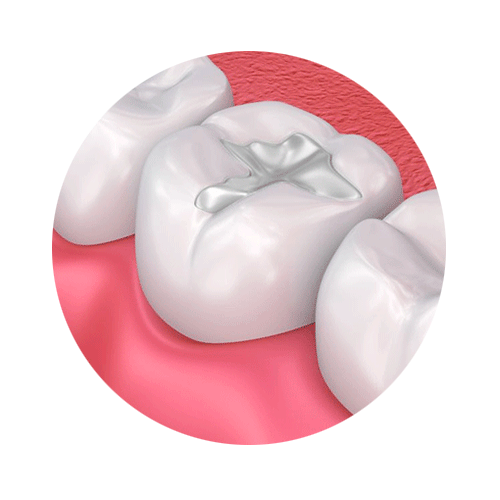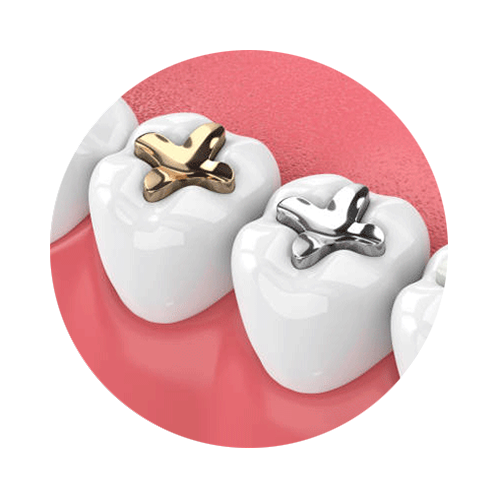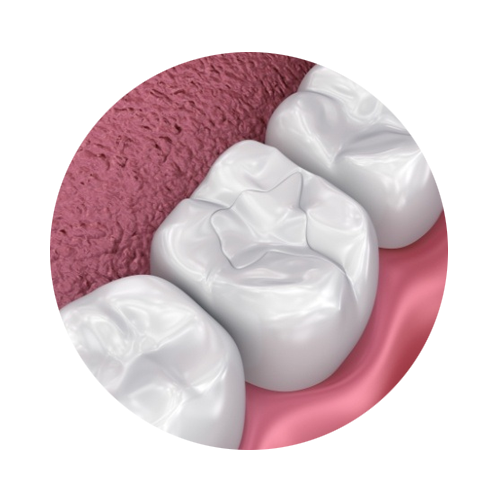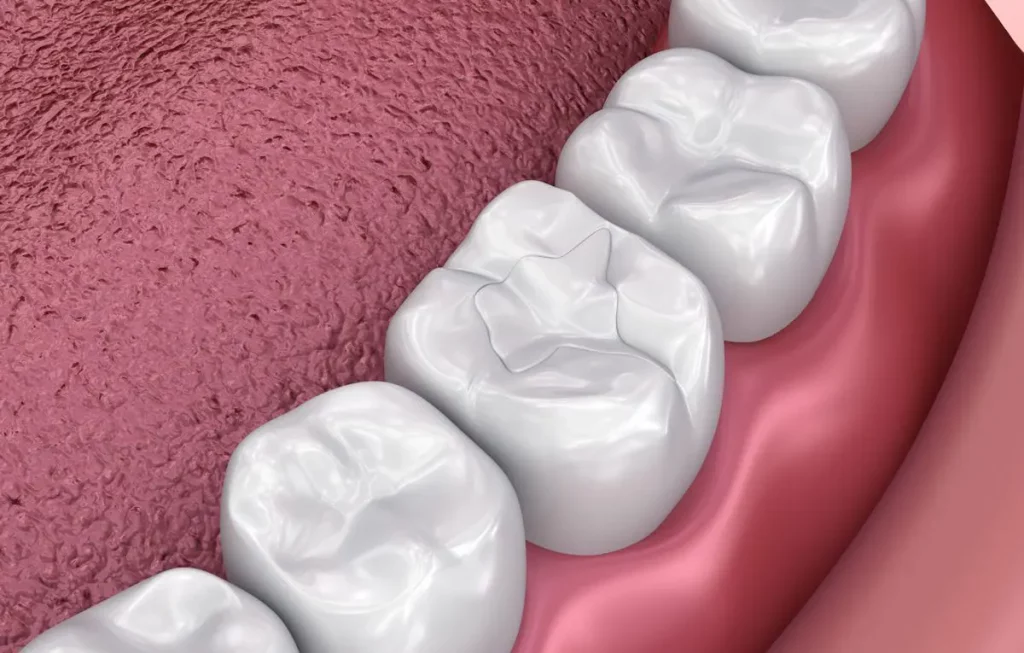
What Are White (Composite) Fillings?
White composite fillings, also known as tooth-coloured or resin fillings, are a popular type of dental restoration used to treat dental cavities and other tooth defects. These fillings offer a more aesthetically pleasing option compared to traditional silver amalgam fillings, as they can be closely matched to the natural colour of the teeth, providing a seamless and natural appearance.
At Gargrave Dental Practice we only offer white composite fillings treatment for our patients instead of traditional amalgam fillings. Composite fillings allow for more conservative tooth preparation resulting in less healthy tooth structure needing to be removed during the filling placement process, helping to preserve more of the natural tooth. Additionally, white composite fillings have good bonding capabilities, as they chemically adhere to the tooth structure, providing a strong seal and reducing the risk of leakage and recurrent decay.

Process And Procedure
A tooth may decay due to various factors such as poor dental hygiene, mouth bacteria or eating sugary food and drinks which over time weaken your enamel, breaking down the tooth and resulting in a cavity. Unless this cavity is treated, the tooth will continue to decay and become increasingly painful. Our dentist at Gargrave Dental Practice uses composite filling to fill in the cavity, repairing the damage caused by the decay and preventing bacteria from attacking the cavity further. Below we explain the process of placing a white (composite) filling:
1. Firstly, your dentist will numb the area around the affected tooth using a local anaesthetic. This ensures that you remain comfortable and pain-free throughout the procedure. Once the tooth is numb, your dentist will remove the decayed or damaged portion of the tooth using a small dental drill. The area is carefully cleaned and prepared for the filling material.
2. Next, your dentist will select a shade of composite resin that closely matches your natural tooth colour. This is important to ensure a seamless colour blend between the filling and the tooth. The composite resin material comes in a putty-like form that can be easily shaped and moulded to fit the cavity.
3. Your dentist will apply an adhesive or bonding agent to the prepared tooth surface. This helps the composite filling material to bond securely to the tooth structure. The resin material is then carefully placed in layers into the cavity. Each layer is cured using a specialised dental curing light that activates the bonding agents and hardens the resin. Your dentist will sculpt and shape the filling to ensure proper contouring and a comfortable bite.
4. Once the filling material has hardened, your dentist will trim and polish it to achieve a smooth and natural appearance. This helps prevent premature wear and reduces the risk of staining or discolouration. The bite is checked to ensure proper alignment and adjustments are made if necessary.
5. Finally, your dentist will provide instructions on post-treatment care. This may include avoiding certain foods or drinks for a few hours, practicing good oral hygiene habits, and scheduling regular dental check-ups. With proper care, white composite fillings can last for many years, providing a durable and aesthetically pleasing restoration.
Types Of Fillings

The ceramic and plastic alloys are used to make resin composite dental fillings. These fillings blend right in because resin carries the appearance of natural teeth. They’re called “white fillings” or “tooth-coloured fillings”

Amalgam fillings are very durable and can typically last anywhere between 10 and 15 years, and restore the biting and chewing functions of the teeth.
They are cheaper than tooth-coloured fillings, but they are a distinctive metallic colour, which many patients consider to be too obvious and off-putting.

These are called inlays and onlays, and are bonded to your damaged teeth.
Much like white fillings, they are tooth-coloured, allowing for a subtle restoration of your smile.
A porcelain filling covers most of the tooth. It is often used on front teeth for a brighter and whiter smile.
Benefits Of White Fillings
Aside from the aesthetic benefits, there are a number of benefits to having a white filling fitted:
- The composite material is bonded to your teeth helping to restore original strength and function
- White fillings match the shade of the teeth
- Smaller hole, less filing is needed to make white fillings fit
- Can be fitted in one appointment
- Not prone to thermal expansion and contraction (like amalgam fillings)
- Durable and can last a very long time with the correct care
